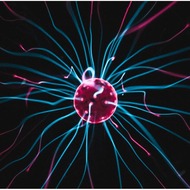Concord Consortium Chemistry
(View Complete Item Description)Interactive STEM activities, free for your classroom. Bring out the inner scientist in all your students with our scientifically accurate models and activities. Search below or head over to our NGSS Pathfinder! We’ve been expanding and deepening STEM inquiry with technology for over 20 years. Our free, cutting-edge tools and resources have brought STEM practices to life for over a million learners worldwide. Lessons: • Atomic Structure • Boiling Point • Catalysts • Ceramic Forces • Charged and Neutral Atoms • Comparing Dipole-Dipole to London Dispersion • Concentrating Charge and Electric Fields • Crookes Tube • Diffusion Across a Semipermeable Membrane • Diffusion and Molecular Mass • Diffusion and Temperature • Diffusion of a Drop • Electrons in Atoms and Molecules • Exploring Electron Properties • Factors Affecting London Dispersion Attractions • Gas Laws & Human Biology • Gas Laws & Weather Balloons • Hydrogen Bonds: A Special Type of Attraction • Intermolecular Attractions and States of Matter • Metal Forces • Molecular View of a Gas • Molecular View of a Liquid • Molecular View of a Solid • Oil and Water • Phase Change • Plastic Forces • Polarity and Attractive Strength • Seeing Intermolecular Attractions • States of Matter • The Temperature-Pressure Relationship • The Temperature-Volume Relationship • The Volume-Pressure Relationship • Tire Forces • What is Pressure?
Material Type: Activity/Lab



















